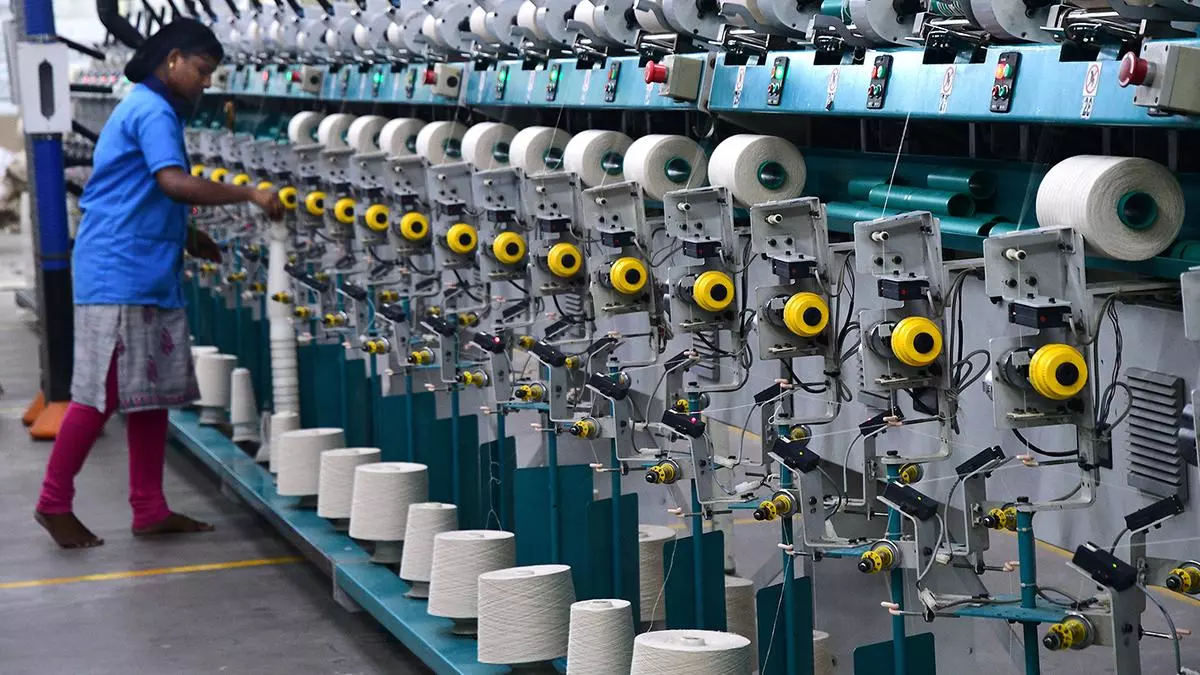As cotton prices surge, SIMA urges spinning mills not to panic
The Southern India Mills’ Association (SIMA) has said a 10-12 per cent increase in cotton prices in the past fortnight has triggered a panic across the textile value chain.
Spinning mills should also avoid resorting to panic purchases of the natural fibre, said SK. Sundararaman, Chairman, SIMA, in a press release.
Over the past fortnight, prices of the Shankar-6 variety, for example, have increased from ₹55,300 a candy (356 kg) to ₹62,000. Stating that the Committee on Cotton Production and Consumption (CCPC), a body set up by the government with all stakeholders on board, estimated the crop at 316.57 lakh bales (170 kg each), imports at 12 lakh bales, consumption at 310 lakh, exports at 25 lakh bales, and the ending stocks at 57.65 lakh bales as closing stock for the cotton season 2023-24, said Sundararaman.
Rise in capacity utilisation
The capacity utilisation of the spinning mills has increased to 80-90 per cent from 70-75 per cent currently, and already 20 lakh bales have been reportedly contracted for exports. With Indian cotton prices set to rule at par with global prices, demand for exports is likely to decline.
“Therefore, the estimated closing stock, which is one of the highest, would ensure adequate availability of cotton,” the SIMA chairman said.
About 215 lakh bales have arrived in markets till February 2024, and daily arrivals continue to be above one lakh bales. “A significant portion of good-quality cotton this season has arrived in the market, and the rise in prices will only benefit traders and not farmers, which will have a serious impact on the industry till the end of the season,” he said.
Post-July scenario
Post-July 2024, cotton availability in the global market is expected to be higher on higher production in Australia, Brazil, and other countries, Sundararaman said, adding that Intercontinental Exchange cotton futures could post a “huge inverse” after July, which in turn would soften Indian domestic cotton prices.
Spinning mills should avoid panic purchases as the supply position is comfortable, he said. “The global cotton supply position and the stock-to-use ratios are also comfortable in most of the cotton-consuming countries. Therefore, mills should ignore the rumours and exercise extreme caution while procuring the cotton,” the SIMA Chairman said.
He urged the Union Textile Minister to advise the Cotton Corporation of India, which has procured 22 lakh bales of cotton this season besides selling one lakh bales, to adopt the policy it followed from June 2016 (offseason 2015-16) to maintain price stability and sustain global competitiveness.
Though the CCI had a limited volume of three lakh bales during 2016, its policy of releasing cotton when the domestic price exceeded the international price (ICE futures) and suspending sales when the local price went below the ICE futures benefited the industry to meet export commitments, said Sundararaman.
Plea for duty exemption
The SIMA Chairman appealed to the Centre to exempt all cotton varieties from the 11 per cent import duty during April–October, as was done in 2022, to prevent traders from adopting import parity pricing and impacting export competitiveness.
Levying 11 per cent import duty during the peak season and exempting it during the off-season would create a win-win situation for farmers and the industry. “This will facilitate the value-added segments to do cost correction on a regular interval and aid in boosting exports, taking advantage of various other proactive initiatives of the government,” said Sundararaman.
This is necessary as the predominantly cotton-based Indian textiles and clothing industry has been taking advantage of the home-grown natural fibre that are highly competitive compared with international prices despite high capital costs, tariff barriers, and high power costs, he said.
